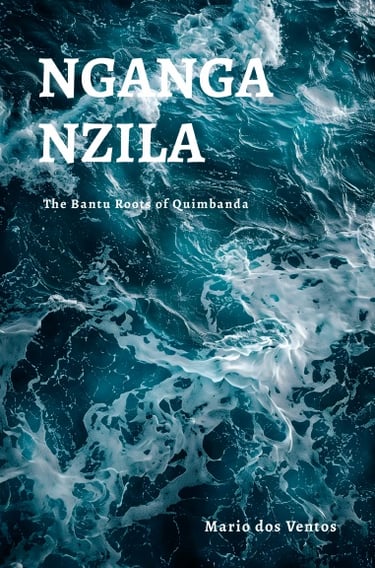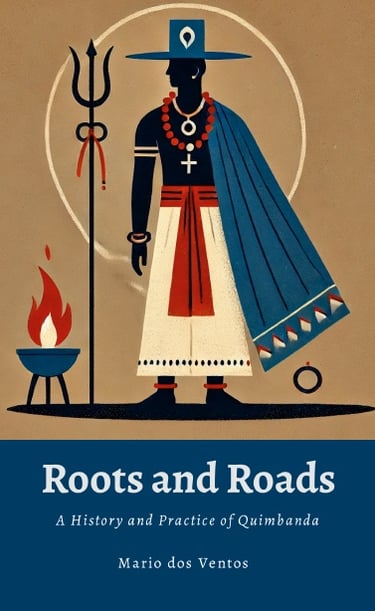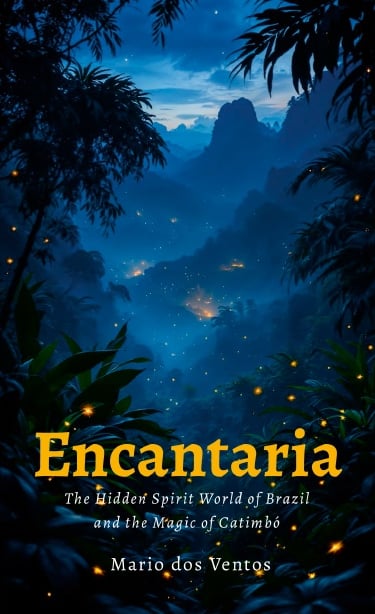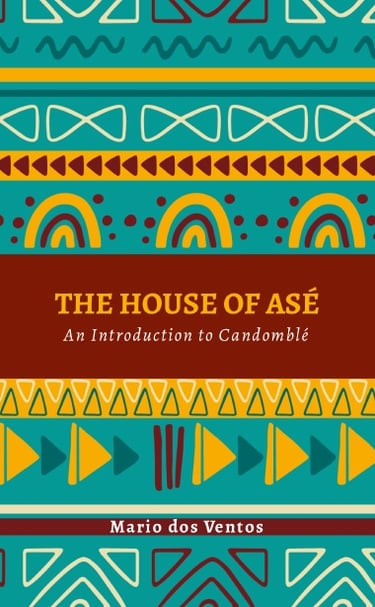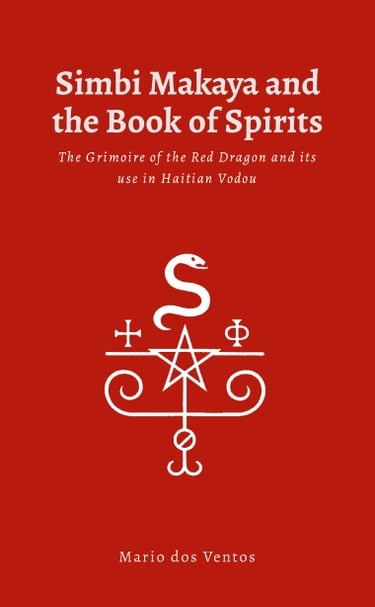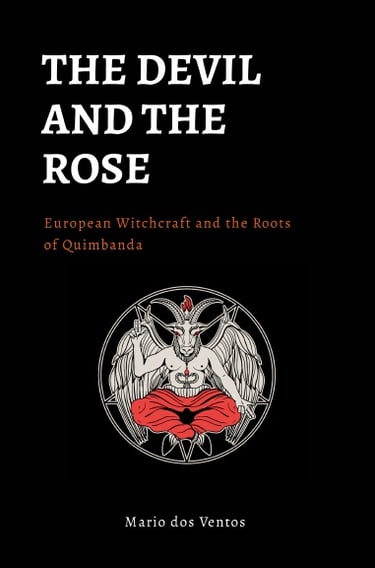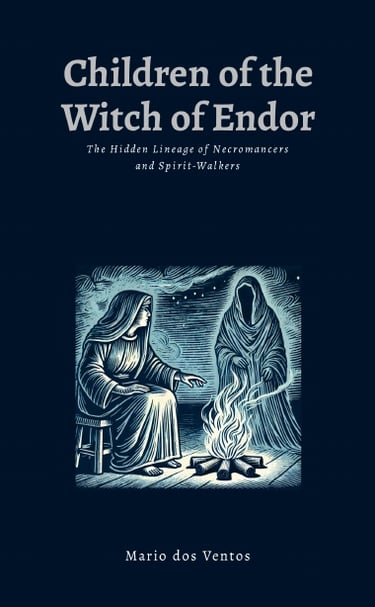
History, Philosophy, and Practice
Following several years of practice, Mario dos Ventos was formally consecrated in Quimbanda in 2005. In 2008 he was initiated in Haitian Vodou (Ason lineage) in Port-au-Prince, and in 2010 in the Ketu nation of Candomblé. He has also fulfilled obligations in Umbanda in Brazil, strengthening his ties to this spiritual current. From Cuba he has received Palo Mayombe, and the Hand of Ifá. For many years he has walked the roads of these traditions under the guidance of elders in Brazil, Haiti, Cuba, the United States, and beyond. He lives in London, England.
His works is rooted in the living currents of the Afro-Atlantic traditions, carried forward through generations of devotion, discipline, and service. These are paths shaped by the wisdom of elders, the presence of the spirits, and the communities that sustain them. They have endured through times of hardship and change, adapting without losing the essence that makes them whole. Each is a living current, informed by history yet responsive to the present, carried by those who know that the keeping of tradition is as much an act of respect as it is of memory.
Mario’s approach to these traditions is one of stewardship rather than ownership. The knowledge he shares comes through years of guidance, practice, and direct experience, always with respect for the people and the spirits who entrusted it to him. His writing seeks to place each element in its proper context, showing not only how it is done, but why it is done, and how it lives within a wider spiritual landscape. He believes that to truly understand these ways, one must see them not as isolated techniques but as the expression of a whole worldview, bound together by relationships of trust, responsibility, and reciprocity.
In exploring history, philosophy, and practice, these works aim to preserve as much as they illuminate. They invite the reader to step beyond surface impressions and into the layered reality of traditions that are often spoken of in fragments or reduced to convenient simplifications. Here they are presented as they are lived: complex, dynamic, and inseparable from the communities to which they belong. Through this work, Mario seeks not only to pass on knowledge, but also to honour the spirits and people who keep these traditions alive.

NGANGA NZILA: The Bantu Roots of Quimbanda is a return to what was never lost. It strips away the borrowed masks of demonology, Spiritism, and Catholic mysticism to reveal a tradition rooted not in fear, but in rhythm, ancestry, and elemental power. At its heart, Quimbanda is not a dark inversion of other paths or the playground of Goetic spirits. It is a radiant, grounded system of Bantu origin, forged in the graveyard and spoken through fire.
This book walks with the spirits. It explores the living logic of the nganga, the ethics of spiritual authority, the structure of pacts made not in paper but in breath and flame. It honours the true roles of Exu and Pomba Gira, not as devils or demon, but as ancestral forces who guard justice, open roads, and demand presence. From graveyard to the crossroads, from hot mouth to clean feet, the path is laid bare - not to be possessed, but to be respected.
ROOTS AND ROADS: A History and Practice of Quimbanda
Quimbanda is not a religion of temples. It is not built on dogma, hierarchy, or hollow ritual. It is a path of fire walked in secret. It is a living pact between spirits and those who dare to serve them. Roots and Roads is a groundbreaking book on the real history and living practice of Quimbanda – a fierce, complex, and deeply misunderstood Afro-Brazilian spiritual tradition. Born from the Bantu world and shaped in the streets, cemeteries, and crossroads of Brazil, Quimbanda is a practice of power, liberation, justice, and devotion. It moves in rhythm with the spirits who remember everything. This is not a book of fantasy or invention. It is rooted in truth and research. Drawing from the Angola nations of Candomblé, from oral memory, from ritual experience, and from two decades of working with Exu and Pomba Gira, Roots and Roads brings clarity to a path often distorted by outsiders and misunderstood even by those within.
Encantaria: The Hidden Spirit World of Brazil and the Magic of Catimbó is a rare and intimate journey into one of South America’s most beautiful and mysterious spiritual traditions. Rooted in centuries of Indigenous knowledge, folk Catholic devotion, and ancestral spirit work, Encantaria is a living path of prayer, ritual, and enchantment. At its heart are the Encantados, the spirits of the land, water, and wind who never died but transformed into invisible guides walking beside those who know how to listen. In this richly written book, you will meet the forest-dwelling Caboclos Encantados, the Ciganos who dance between fate and freedom, the Ladies of the Waters, and the vanished king Dom Sebastião, who still answers those who call with faith. You will explore sacred sites across Brazil, learn how the Seven Kingdoms of Encantaria shape spiritual life, and discover daily practices using tobacco, candlelight, prayer, and song. With rituals, offerings, divinations, and prayers woven throughout, this is more than a book. It is an invitation. Whether you are new to the Encantaria or already feel their presence in your dreams and days, this work opens the door with respect, beauty, and deep spiritual warmth.
THE HOUSE OF ASÉ: An Introduction to Candomblé is a powerful and accessible guide to one of Brazil’s most deeply rooted Afro-Atlantic religions. Grounded in ancestry, ritual, and the sacred presence of the Orisás, this book offers a clear and respectful path into the living world of Candomblé – its nations, its rhythms, its initiations, and its mysteries. Written for seekers, students, and those standing at the threshold of the terreiro, this is not a book of quick answers or simplified formulas. Instead, it is an invitation to approach slowly, to listen deeply, and to honour the long memory carried by this religion of fire, food, and spirit.
From the sacred structure of the terreiro to the seven-year cycle of initiation, from the presence of Esù at the gate to the quiet wisdom of the elders, this book brings Candomblé to life with clarity, care, and devotion. It is a celebration of Black ancestral religion, a song for the Orisàs, and a reminder that the house of asé still stands, and still welcomes those who come with reverence.
Simbi Makaya and the Book of Spirits unveils a hidden current in Haitian Vodou - the marriage of European grimoires such as the Dragon Rouge with the Congo-rooted spirit-work that gives Vodou its beating heart. This is not folklore retold from a distance but a careful and uncompromising exploration of how these books live in Haitian hands, how their seals, prayers, and pacts are translated into a spirit world shaped by rivers, crossroads, and ancestral memory. Through meticulous research and a refusal to romanticise, the work traces the journey of the grimoire from its printed origins to the altar table, revealing how names on a page become living presences and how those presences adapt without losing their force. It examines the mindset of the priest, the parallel path of book work alongside the drummed rites, and the ethics of approaching such currents beyond Haiti. At its centre coils Simbi Makaya, serpent, scribe, and sorcerer, whose thread runs from the first chapter to the last, binding together histories, pacts, and the practical art of making a book into an ally. For the serious practitioner, researcher, or reader drawn to the meeting of African and European magical worlds, this is both a doorway and a challenge, a work that invites the reader to engage deeply, to act with respect, and to follow the serpent’s thread wherever it may lead.
The Devil and the Rose is a bold, poetic journey into the forgotten heart of witchcraft, where fire and blood, pact and perfume, spirit and soil meet in fierce communion. Bridging the shadowed forests of European folk magic and the graveyard-lit paths of Quimbanda in modern Brazil, this book follows the witch’s crooked way through exile, ecstasy, and emergence. Here, the Devil is not the enemy, but the initiator, the guide, the spark at the heart of the rose. The spirits who rise from the crossroads and the cemetery are not metaphors, but living allies who dance, drink, teach, test, and transform.
With thirteen thorns and one flame, this book honours the power of the pact, the benediction of the adversary, and the living sorcery of those who dare to walk the road less taken. A work of both scholarship and sorcery, The Devil and the Rose is a grimoire, a prayer, and a love letter to the spirits of the margins. For witches, devotees, and all who have felt the call of the flame in the night.
Children of the Witch of Endor: The Hidden Lineage of Necromancers and Spirit-Walkers.
There are those who feel it before they even know its name. A quiet pull. A breath at the edge of dreams. A soft voice calling from the hidden roads. This is the current of the Witch of Endor. Her story has echoed through the centuries, but her presence has never left. She walks beside those who are born to speak with the dead. Those who cross between worlds. Those who carry the unseen breath of the spirits in their bones. This book is not simply history. It is a guide through the living current she carries. Within these pages, you will find the hidden thrones of the dead. The kings and queens who rule the seven secret realms of the spirit world. You will meet the ancestors, both of blood and spirit, who move through every step of this work. You will learn the ancient law of naming, where words awaken powers that never sleep. Here, the Witch of Endor is not treated as a figure of distant legend. She is honoured as an ancestor. A spirit-walker. A quiet companion on the path of necromancy and deep spirit work. This book is not for those who seek power without responsibility. It is for those who feel the pull already. Those who recognise the signs. Those who know in their bones that they have walked these hidden roads before.

Journey through the Mysteries of the Spirit World
© Mario dos Ventos, 2025. All rights reserved.
